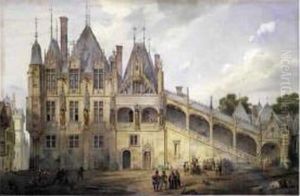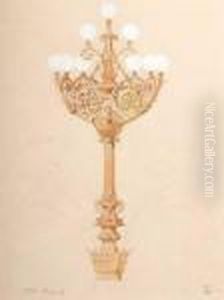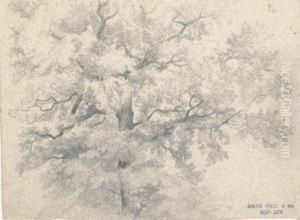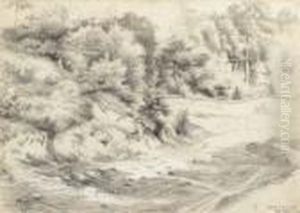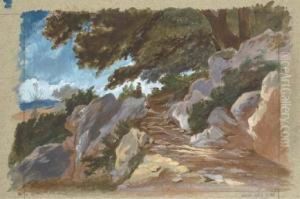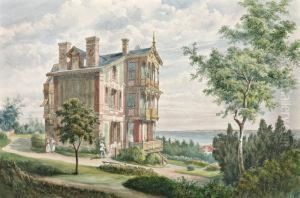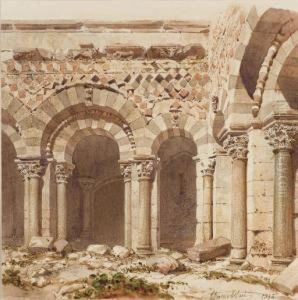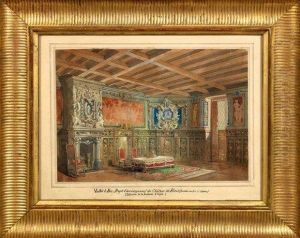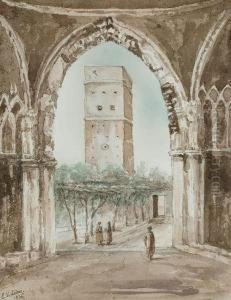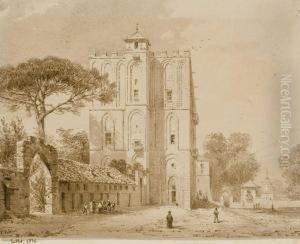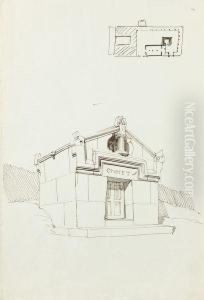Eugene Viollet-Le-Duc Paintings
Eugène Emmanuel Viollet-le-Duc was a French architect and theorist, famous for his interpretive restorations of medieval buildings. Born in Paris on January 27, 1814, into a family with roots in the legal profession, Viollet-le-Duc broke away from the traditional career path expected of him to pursue his passion for architecture. Despite not receiving a formal architectural education, he managed to amass a vast amount of knowledge through extensive reading and by undertaking practical work on various construction sites.
His career took a decisive turn when he was appointed to restore the Vézelay Abbey in 1840. This project, along with his work on the restoration of the Notre-Dame de Paris and the fortified city of Carcassonne, established him as a leading figure in the field of Gothic Revival architecture. Viollet-le-Duc's approach to restoration was innovative and sometimes controversial; he often added new elements to the buildings he worked on, aiming to restore them to what he believed was their original, ideal state. This method stood in contrast to the later philosophy of conservation, which emphasized preserving buildings as they were found.
Beyond his restorative projects, Viollet-le-Duc is equally renowned for his theoretical contributions to architecture. His most influential works include the 'Dictionnaire raisonné de l'architecture française du XIe au XVIe siècle' (A Rational Dictionary of French Architecture from the 11th to the 16th Century) and the 'Entretiens sur l'architecture' (Discourses on Architecture). These publications not only provided a comprehensive overview of Gothic architecture but also articulated Viollet-le-Duc's beliefs in the importance of functionality, rational construction methods, and the use of modern materials, which anticipated some of the principles of modernist architecture.
Viollet-le-Duc's impact extended beyond France; his theories and practices influenced the development of architectural restoration and the Gothic Revival movement across Europe and in the United States. Despite the criticism he faced for his restoration methods, his work and writings continue to be studied and appreciated for their contributions to architecture and preservation theory. Eugène Viollet-le-Duc passed away on September 17, 1879, in Lausanne, Switzerland, leaving behind a legacy that forever changed the way we think about architectural history, restoration, and conservation.
